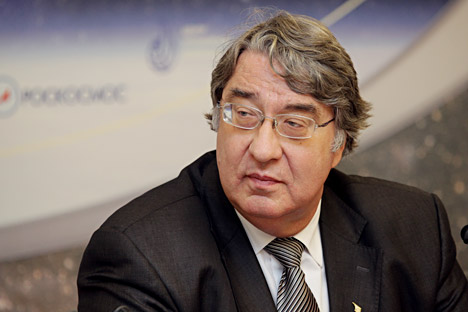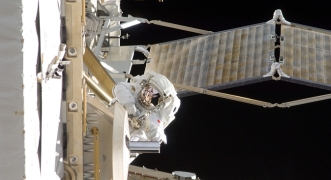Work for the future of space exploration begins now

Head of the Analytical Center of the Russian Space Agency, Gennady Raikunov: "Space exploration can progress in stages. The first step is not a permanent human presence, but rather a periodic one." Source: ITAR-TASS
VPK: What are the main industry trends? In particular, how is the manned space program developing?
Gennady Raikunov: Attitudes toward manned space flight are ambiguous: for example, the International Space Station. The ISS program has largely run its course. There is no point spending such sums on such a vast project, requiring regular fuel deliveries and other vital components. Moreover, many delicate experiments simply cannot be conducted on board the ISS.
Gennady Raikunov's profile
Gennady Raikunov, a professor with a doctorate in technical sciences, has been the head of TsNIImash since 2008. Raikunov directs work in the field of systems analysis, ballistic flight support, development of spacecraft systems, and socio-economic and military-strategic assets, including information technologies for the remote sensing of Earth from space.
Space exploration can progress in stages. The first step is not a permanent human presence, but rather a periodic one. The second is to shift the focus from ISS-type projects to multiple specialized spacecraft, each designed for a specific task or scientific experiment.
The ISS is a man-made object that requires fuel to remain in operation. Meanwhile, Earth has a naturally occurring satellite: the moon. Its huge area and development potential make it an unprecedented opportunity for human activity.
We're not planning to do what the Americans did in the 1960s. The moon can be used as an international space station. If scientific laboratories are set up there, research could be done of a kind not possible on the ISS.
VPK: Besides planetary science, the best scientific minds are excited about fundamental research into phenomena such as dark matter and dark energy. Is scientific research being carried out in this area at the Central Research Institute of Machine Building (TsNIImash)?
G.R.: Of course. For example, according to one hypothesis, dark matter is present everywhere, including near-Earth space. Together with scientists from Italy, the Russian Academy of Sciences, the Ministry of Education and Science, and the Federal Space Agency are conducting the RIM-PAMELA experiment, which aims to discover particles of dark matter ‒ so far, without success.
VPK: What spacecraft will be used to implement the ambitious plans to develop near-solar space and flights to other planets?
G.R.: Before discussing the spaceships of the future, we must understand that it is still too early to write off current hardware. Companies heavily involved in the development and design of rockets, including foreign firms, consider traditional liquid-propellant engines to be fully capable of interplanetary flight.
Central Research Institute of Machine Building (TsNIImash)
TsNIImash is the core analysis center and headquarters of the Federal Space Agency. It provides scientific justifications for decisions regarding new developments in the field of space and rocket science. The Institute regularly collaborates internationally with the United States, China, France, Germany, Japan, and other countries.
But, of course, work for the future begins now. Modern research is focused on new types of engines, especially nuclear, electro-reactive and electro-rocket designs including plasma and ion technology. Ready-made models for long-distance spaceflight do not yet exist ‒ only prototypes.
Future spaceflight also requires new construction and shielding materials, both light and strong. Spacecraft for Mars missions made from traditional materials will have to weigh 550-1000 metric tons (600-1100 tons), no more. That is why the development of new, lightweight materials and new engines will be critical.
VPK: Let's move from deep space to near-Earth orbit. Is work being carried out on the next generation of manned spacecraft to replace the Soyuz series? What new satellites can we expect to see in the near future?
G.R.: Of course work is being carried out. A future manned transport ship is being developed by RKK Energia. As for the creation of new satellites, future satellites will have to learn to multitask on a grand scale. This will significantly add to their complexity.
Modular architecture and advances in debugging and repairs are opening up new horizons in the field of spacecraft maintenance. As such, new types of service stations with auxiliary modules and vital diagnostic equipment will soon be located in orbit.
VPK: What about the further development of reusable launch systems? After the folding of the Energia-Buran project in the Soviet Union and the space shuttle program in the United States, have there been any other developments?
Of course, it is one of the tasks under the Vostok Cosmodrome project and others. Reusable launch systems are an option for further space exploration, but with some modifications on the current shuttle design. In my view, the shuttle is not economical; the launch and production costs are too high.
The interview is first published in Russian in VPK Daily.
All rights reserved by Rossiyskaya Gazeta.
Subscribe
to our newsletter!
Get the week's best stories straight to your inbox
